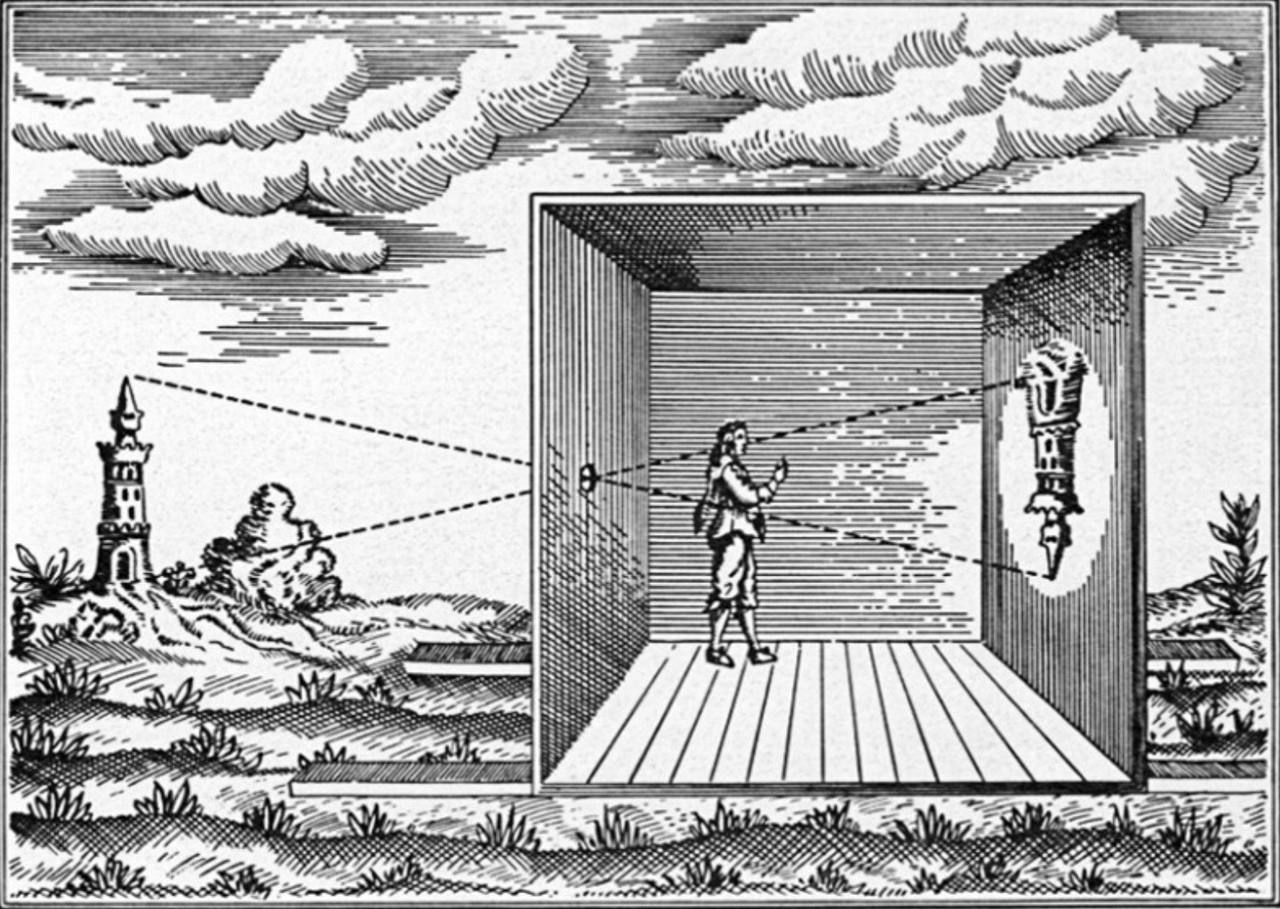When one thinks of how photography began, it feels inconceivable that somebody, somewhere, dressed in hand died linens stumbling between cattle and ravines discovered the refraction of light. Even more inconceivable when we think of modern day developments of digital imagery. Though concepts of photography did very much begin somewhere within this imagined landscape before 5th B.C.E, the camera as machine we know it as began its early developments in remote 11th century antiquity, with Iban Al- Haythams’ discovery of the camera obscura proceeded by several other developments in the 18th century, with finally an accessible and functional 100 film exposure camera built for the consumer in 1888 by George Eastman.

When considering the development of photography, and its accompanying technological devices responsible for its liquidation, one must also consider its historical foundations. It is within this very history of photography, that we see the positioning of the photographer as almost God like, in their ability to immortalize, and further positions the photograph as unreplicable relic’s of the past.
Art critic Godfrey Cheshire suggests that:
“Photographs, […] are not just idle records. They are objects of contemplation whose fascination comes from the way they connect us to the world”.
Despite the years of using analog, and later digital camera’s, built on the bones of Al-Haythams, and Eastman’s discoveries, it feels that we are ever distanced from the delicate intricacies of the history of photography, and what these photographical discoveries aimed for: making an image permanent, un-replicable, and as Cheshire recalls, connecting us to the world of the real.
In the era of mass media, images do all that which the art of photography must urgently oppose, with images being reproduced in mass, and easily replicated, and distorted. In many ways, the connection to photography as an act of unique permanence, and connection to the real world, has dissipated amongst a web of wires and a billion blazing blue-light screens. How do we reconnect to what the art of photography inspires, namely; connection, permeance, the world of the real, and ownership?
Arguably the intersection between the wonderful and ever expanding world of non-fungible tokens (NFTs), offers redemption from to this increasing disconnect. The primary interest in
NFTs emerge from creating scarcity, that in turn ascribes unique value to code-built digital objects. An NFT can, for example, imprint a blockchain with a unique signature for the ownership of a digital asset, thus making it un-replicable. This very notion returns to the original notions of photographies unique permanence, connection, but also importantly ownership. With the ability to control ownership of digital assets, NFTs have transformed how a we buy, sell, and relate to photographic art. In March, Everydays: The First 5000 Days, a collage of previous artworks by a 40-year-old American named Mike Winkelmann, better known as Beeple, sold for $69.3m at Christie’s New York, after which the NFT market has continuously grown, and offers the potential for incorruptible, and immense return.
Uncontaminated’s community of fine artists, have begun to produce within this decentralized, distributed, online market, allowing for a new radical exchange with the art market. The nature of fine art photography grounds the practise in aesthetic distinction, and historical lineage. Fine art photographers carry with them a lineage and importance inextricably tied to the very first renderings of the real world. As they navigate this lineage, so too must they move forward combining with digital technologies, creating both lucrative opportunities as well as aesthetic durability. Uncontaminted’s creative community do not shy from this occasion. In fact, their works are developed on the very crux of moving towards what is becoming of the aesthetic future, while remaining grounded in photographic roots.
Experimental video artists such as Chris Jack, weaves poetry with photographic images through using interactive techniques, creating unique narratives deciphered somewhere between Jack’s vision and that of the viewers. Guggenhein fellow Richard Sandler’s video art observes bodies on the metro and saturated city scenes, with the same attention as it observes the bashful rocking of waves against dismembered rock. Both Jack and Sandler in their unique approaches to the worlds around us, ask that we reimagine our own positionally in the world of the real. Both Jack and Sandler include important developments in both anthropological as well as topographical research, experimentally documenting bodies between space and cities, seascapes and time.
Artists such as Francesco Bellina’s work focus on more contemporary socio political issues, with focuses in the migrant crisis, as well as sex work. Bellina’s work captures the corners of the world of the real that are exiled from our moral collective consciousness. Through researching and documenting these otherwise ostracized groups, Bellina uses his camera as a tool to redress otherwise excluded discourses.
Further, similarly rooted in the world of realism, female artists such as Lisa Sorgini and Tajette O’Halloran’s conceptual documentary art focus on documenting bodies between bodies in intimate stillness. Their point of departure are bodies that live in the world of the real, and as
bodies that live in the world of the real, their renderings are just as surreal and unusual, as they are at the same time reminiscent of our own bodies and others that we know. Lily Hatten discloses a similar candid tenderness in her works. As a mother herself, her works generously unfold the delicacies of motherhood and all of the life, warm milk, stretched bellies, wrinkled feet, and cold hard floor that being a mother embodies.
Such personal, and anthropological sensitivities ground a photographical practise that fuses with NFTs and new digital developments, in representation of the world of the real. These fine art photographers, and videographers are reconfiguring lineages to the history and art of the camera. Their works remain dedicated to representations of the world of the real, and a return of the unique photographic image.
At the dawn of an era where the art of photography has been all too often neglected for cheap commodities, photographers functioning amongst the NFT landscape reinvest new value and reconnection to photographic and artistic history, through the power of secure digital acquisition. This discourse of progressive technological determinism allows both the collector, as well as the artist, to feel reconnected to the very foundations on which photography has been founded on, namely, the power to make the un-capturable permanent and unique, and further attaining a radical understanding of the camera as modern day magic, as opposed to screen-cracked, at hand, convenience.

